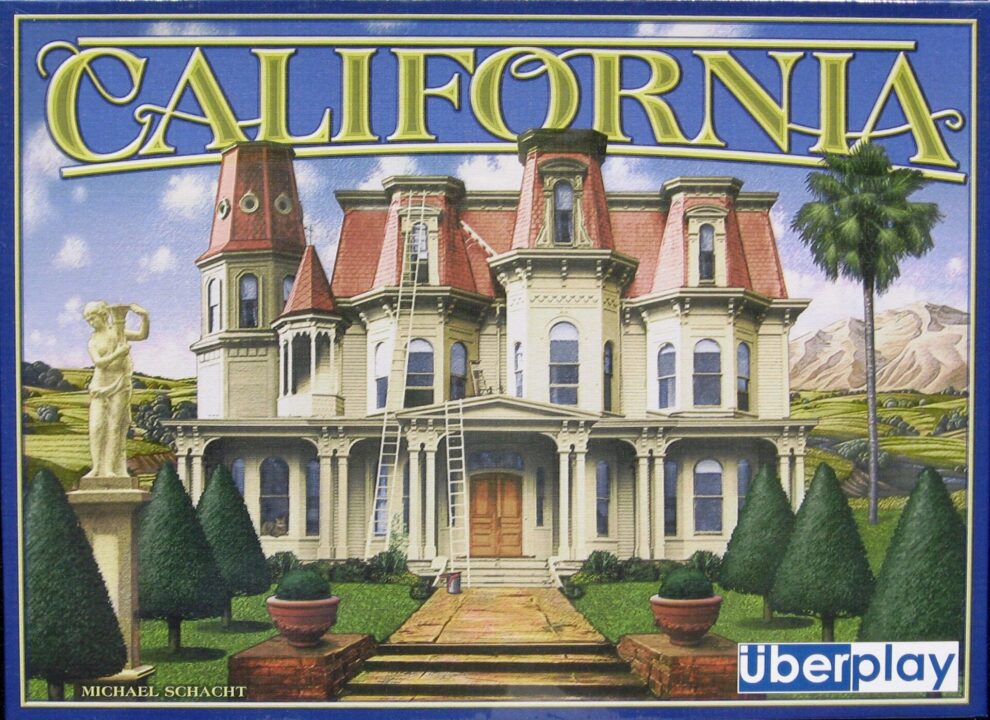Welcome to my review of California! If you’ve ever wanted to buy a mansion, fill it with snazzy furniture, and maybe annoy your friends along the way, this game promises all that—minus the actual property taxes. My friends and I spent a few evenings squabbling over sunrooms, snatching up sofas, and occasionally yelling, “That’s MY lamp!” I’ll share my honest, possibly furniture-obsessed thoughts on whether this sunny board game is a golden treasure or just a sunburn in a box.
How It Plays
Setting up
Each player picks a color and grabs their dream house board. Spread those lovely tiles on the table—try not to drop any on the cat. Everyone gets some starter cash and a handful of furniture tiles. Set the sunniest player as the first to go. (I wasn’t picked. I still say it’s rigged.)
Gameplay
On your turn, choose to buy tiles, build on your board, or snag some fancy furniture for bonus points. Tiles let you pimp out your house and garden. You need to keep an eye on both your own board and what your friends are hogging. Turns go quick unless Dave spends ten minutes choosing drapes, again.
Winning the game
Once the tiles run out, it’s scoring time! Points come from room sets, outdoor bling, and a little bit for leftover cash. Whoever has the swankiest house—sorry, the most points—wins. If you tie, congratulate yourself: you both own prime California real estate. It’s a dream, but at least you don’t have to mow the board.
Want to know more? Read our extensive strategy guide for California.
Game Mechanics and Flow in California: Smooth Sailing or Traffic Jam?
I sat down with my friends on a sunny afternoon (felt very on-theme) to play California, thinking, “How hard can it be to decorate a mansion in Malibu?” Turns out, much harder than winning the lottery. The game flow starts off breezy. Each player grabs a starting house and then scrambles to fill it with fancy items and guests, all while desperately eyeing their neighbor’s dream swimming pool. You get to pick tiles from a central market and then place them in your home, so everyone’s house grows at a weird, lopsided pace—just like my own DIY furniture builds.
Turns go quick, which is great because no one likes that one cousin who takes twenty minutes to decide if the hot tub goes in the sunroom or backyard. In California, you grab, you pay, you place—it’s all streamlined. The action is as smooth as a convertible cruising down Highway 1… unless someone hoards all the sun tokens, then things get as tense as LA traffic. We had some hilarious moments when someone realized too late that guests don’t want to visit unless there’s enough bling. So, you also have to plan ahead, or your luxury mansion will look like a college dorm.
I did notice the mechanics reward folks who remember what everyone else is collecting. If you don’t pay attention, you’ll end up missing that last piece needed for your bonus, which feels a bit punishing. But for the most part, the flow is fast and friendly—no downtime to update your Instagram, sorry. And while the rules look busy at first, after one round everyone got it, except for my buddy Pete who still thought pool tables go outside.
Next up, I’ll break down California’s luck versus strategy balance—will the dice rule your destiny, or do brains win the bling?
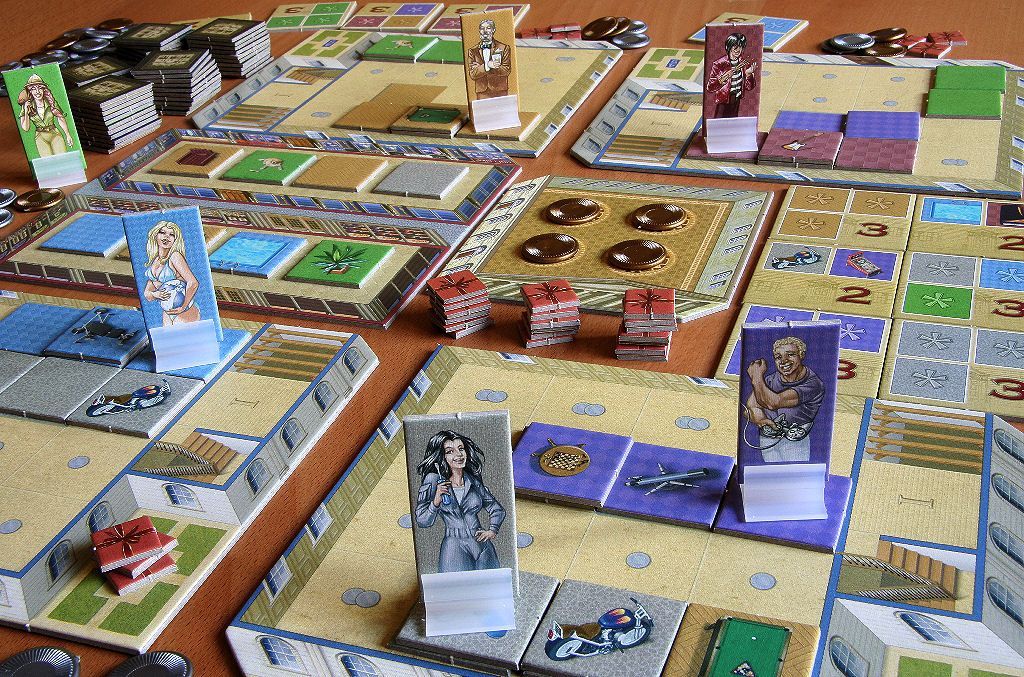
Luck vs. Strategy: Is California a Game of Skill or Just Good Vibes?
Alright, let me get straight to the point—California is one of those games that struts around in sunshades pretending it’s all about smart moves, but sometimes, luck sneaks in wearing flip-flops. I sat down with my friends (and one token dog, if I’m honest) to figure out whether brains or blind luck decides who wins in this Golden State showdown.
The game lets you grab flashy furnishings for your pastel mansion and rent out rooms to friendly tourists. That sounds like a strategic paradise, right? Well, here’s the catch: the goodies you can get each turn depend on what’s randomly drawn. Sometimes you’re blessed with a hot tub and sometimes you’re stuck with a lava lamp from the garage sale. This randomness means you can plan your perfect beach house all you want, but if fate says no surfboard for you, tough luck. I’ve seen my neighbor Dave, who says he’s a board game wizard, get totally wrecked by a run of bad luck in California. He even accused my dog of cursing his tiles. I wish I could say skill always beats luck, but in California, sometimes the dice just refuse to roll your way.
That’s not to say strategy doesn’t matter. Smart timing and clever placement can help you make the best of what turns up. But if you crave full control, California might leave you with a sunburn and a frown. The balance between luck and skill here is like my tan lines—uneven.
Next up, I’ll spill the tea on how much you get to mess with your friends and steal that sweet ocean-view rug in the Player Interaction and Competition section. Stay tuned!
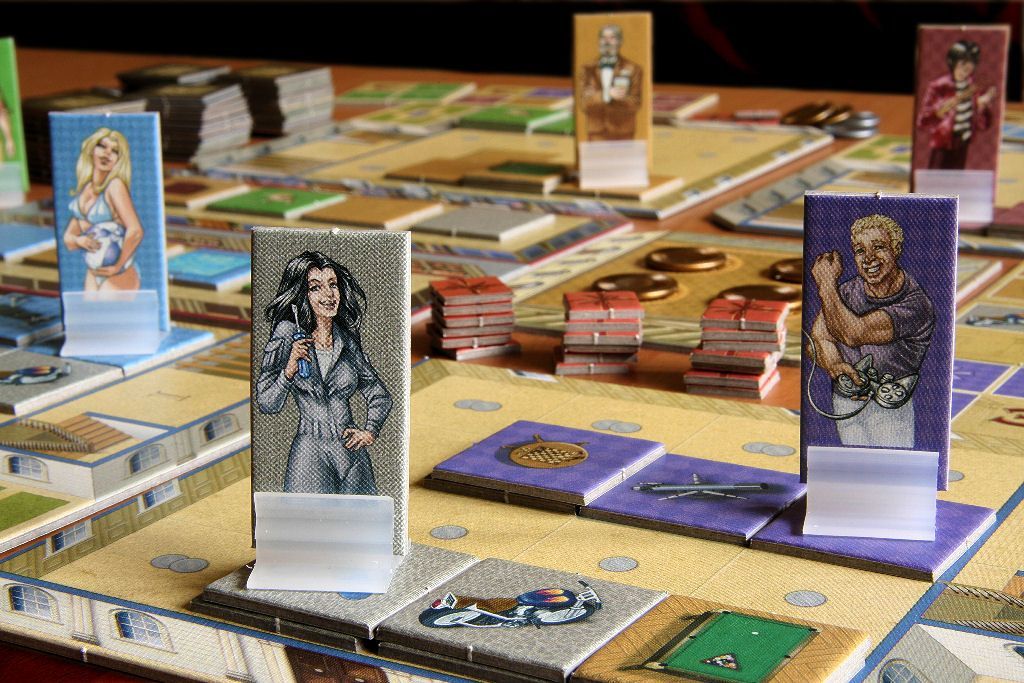
How Players Clash and Cooperate in California
If you ever want to know what it feels like to have your “friend” steal the last piece of furniture you need to win a fancy California mansion, play California. This game is not for the faint-hearted or the easily offended. I learned this when my friend Sam, who I thought was a peaceful soul, snatched a shaggy rug from right under my nose. That rug was all I needed to win. Dreams shattered like a dropped surfboard.
The player interaction in California keeps things spicy. Don’t expect to just quietly stare at your own little house. Oh no. You must watch your opponents, block them from snagging key resources, and swoop in on opportunities like a seagull eyeing an unattended sandwich. The shared resource pool means you’ll always have to weigh your own needs against the risk that others might grab what’s left. It’s a beautiful mix of silent alliances and sneaky sabotage, and I swear, my group has never been more polite (or fake polite) as when plotting each other’s downfall.
Competition is high, but not mean-spirited. Nobody gets knocked out early, which I love. The tension builds until the very last turn, making for a lively experience where everyone stays involved. Still, if you want to avoid heated debates about who stole what from whom, maybe don’t play with your in-laws. Or do—I’ve heard California can spice up family gatherings.
Next up, let’s see if California shines in replay value and fun, or if it’s a one-hit-wonder like a pop song you secretly love!
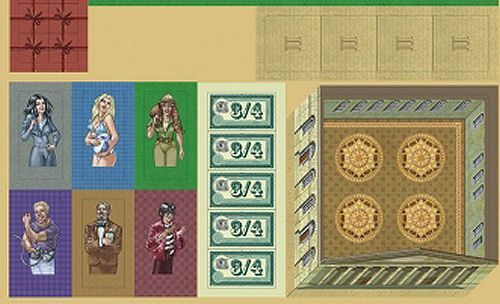
Will You Want to Move Back to California? — Replay Value and Fun Factor
Alright, let’s see if California is a vacation spot you’ll want to revisit, or if it’s more of a “thanks but I’ll stay home and organize my sock drawer” kind of deal.
So, after a handful of games with my usual table of misfits (one guy never stops eating chips, I swear he’s got a secret second stomach), I noticed California has this uncanny ability to make people cackle while they scheme. The game keeps things snappy and rarely drags out. There’s always a new combination of house upgrades, fancy tiles, and furniture to grab. One game, I tricked everyone and filled my house with bathtubs—seriously, who needs six bathtubs? But hey, it almost won me the game. Almost.
But here’s the thing—California isn’t one of those games where every single round feels wildly different. Sure, there’s variety in what’s available, and each player’s route to their dream Malibu bungalow can change. However, after half a dozen plays, you might crave a little more spice. It’s still fun, especially when you’re teaching new folks or just want something light and a bit silly. But don’t expect the depth or wild twists you might get from heavier games.
Would I recommend this game? If you love bright artwork, playful competition, and the chance to live out your Surfer-Chic Home Decor dreams (even ironically), then yes—California is worth a spin. Just don’t expect to write a board game memoir about it.
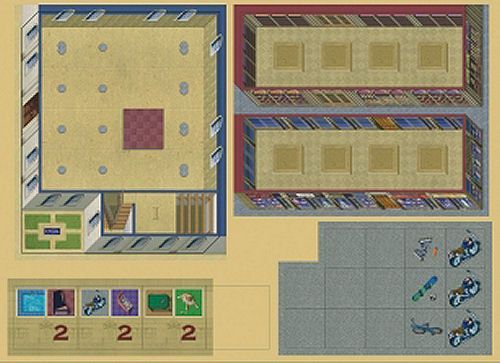
Conclusion
Well folks, that’s a wrap on my sun-soaked journey through California (the board game, not the state—my wallet can’t handle Disneyland prices). I had a blast puzzling out the best ways to furnish my mansion while sneakily swiping tiles my friends wanted. The setup is quick, the rules are chill, and there’s just enough strategy to keep it interesting—unless Lady Luck decides to surf in and mess with your plans. I love the player interaction and the bright summery vibe, but some of those luck swings did get my sunscreen in a twist. If you want a light, replayable game with a cheeky competitive edge, California is a solid choice. Thanks for coming along on the ride, and may your in-game mansion always have the best garden gnome. Review over—go play something!

